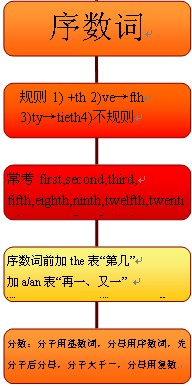认真阅读下列短文,并根据所读内容在文章后表格中的空格里填入一个最恰当的单词。
注意:每个空格只填1个单词。请将答案写在答题纸相应题号的横线上。
Mirriam Websters online dictionary defines happy as: enjoying good health and satisfaction. Sounds nice, doesn’t it? I know a secret that can lead to happiness. Now you may ask, what secret is that? It’s a well-known secret, in fact. Perform a random(随意的) act of kindness per day.
Positive psychology is the scientific study of the strengths and virtues that enable individuals and communities to grow. According to University of Pennsylvania’s website, positive psychology has three central concerns: positive emotions, positive individual character, and positive systems. Understanding positive emotion includes the study of satisfaction with the past, happiness at present, and hope for the future. Understanding positive individual character consists of the study of the strengths and virtues, such as love, courage, creativity, curiosity, self-knowledge, self-control, and wisdom. Understanding positive systems needs the study of meaning and purpose as well as the strengths that help the growth of better communities, such as responsibility, leadership, teamwork, purpose, and tolerance(忍耐力).
Positive psychology focuses on strengths as well as weaknesses, on building the best things in life as well as repairing the worst. It asserts(断言) that human goodness and excellence is just as real as sadness and illness, and that life consists more than seeking the answers to problems. All these things can be summed up in one concept: giving can equal a meaningful life, i.e. happiness.
But you are probably wondering how. Well, let’s examine the research, shall we? A 1996 study showed that wealth is only weakly related to happiness both within and across nations, particularly when income is above the poverty level. So money does not mean happiness. In 2000, a different study showed that activities that make people happy in some way—such as shopping, good food and making money—do not lead to satisfaction in the long term, indicating that these have quick diminishing returns(收益递减).
However, on the other hand, we also know that people who witness others perform good deeds experience an emotion which drives them to perform their own good deeds. Making a contribution to the lives of other people may help to extend our own lives.
This is why I make a point of trying to do something nice every day. Sometimes I tip much larger than I need to. Sometimes I just smile at someone who looks like they really need it. A random act of kindness is an act that receives just as much as it gives. You’ll be happier. They’ll be happier. And you’ll live longer. So, please, perform a random act of kindness each day.
Title
| Happiness and kindness
|
The 小题1: ______ of happiness
| Being healthy and 小题2:_____.
|
The 小题3:_____ to happiness
| Performing a random act of kindness per day
|
Positive psychology behind happiness
| The three central concerns:
Positive emotion is the positive attitude toward the present, the past and the future.
Positive character is the小题4:_______ and virtues in one.
Positive system is what helps better communities 小题5:_______.
|
The focus of positive psychology:
It attaches much importance to building the strengths and repairing weaknesses.
Life is more than 小题6:_______ problems.
A meaningful life lies in 小题7:______.
|
本题信息:英语完形填空难度较难 来源:未知
本试题 “认真阅读下列短文,并根据所读内容在文章后表格中的空格里填入一个最恰当的单词。注意:每个空格只填1个单词。请将答案写在答题纸相应题号的横线上。Mirriam ...” 主要考查您对 序数词 等考点的理解。关于这些考点您可以点击下面的选项卡查看详细档案。
序数词的概念:
表示顺序的数称为序数词。如:first, second, third, fourth。 序数词的构成与用法:
1、序数词的构成:
①一般来说,是由相应的基数词加词尾th构成。
例:four+th→fourth
six+th→sixth
seven+th→seventh
ten+th→tenth
②下面这些基数词在变为序数词时,有特殊的变化。
例:one→first
two→second
three→third
five→fifth
eight→eighth
nine→ninth
twelve→twelfth
③十位整数序数词的构成方法是将基数词的词y变成i,然后再加eth。
例:twenty→twentieth
thirty→thirtieth
forty→fortieth
ninety→ninetieth
④两位或两位以上的基数词变成序数词时,仅将个位数变成序数词。
例:twenty-one→twenty-first
thirty-five→thirty-fifth
a hundred and fifty-three→a hundred and fifty-third
2、序数词的用法:
①序数词在使用时,一般加上定冠词。
例:the first book
the second floor
the third day
the fourth week.
②序数词在多数情况下都用作定语,有的也可以作表语、主语和宾语。
例:The may1st is Labour Day. 五月一日是劳动节。
My room is on the second floor. 我的房间在二楼。
The first is larger than the secon.(主语)第一个比第二个大。
Read the book from the first.(宾语)从开头读这本书。
You'll be the sixth to write.(表语)你将是第六个写的。
③序数词的前面可以加上不定冠词,用来表示“再一”,“又一”的意思。
例:You may have a third try. 你可以第三次尝试。 序数词知识体系:

约数的表达方法:
用tens/dozens/scores/hundreds/thousands/millions of 表示“几十、几百、上千、成千上万”等。
如:The boy bought dozens of pencils.
Thousands of people died in the earthquake.
注意: (A):dozen, score, hundred, thousand, million等表示确切数量时,不用复数。
如:five dozen (of) eggs 五打鸡蛋
hree hundred people 三百个人
分数词的构成和用法:
1)分数词构成法:
分数词(FractionalNumerals)由基数词和序数词构成,基数词代表分子,序数词代表分母。除了分子为1的情况下,序数词都要用复数形式:
如:1/4:one-fourth
5/9:five-ninths
2/3:two-thirds
17/5:three and two-fifths
7/12:seven-twelfths
379/8:forty-seven and three-eighths
此外还有下面表示法:
如:1/2:a(one) half
1/4:a(one) quarter
3/4:three-quarters
9/4:two and a quarter
3/2:one and half
31/4:seven and three quarters
与“认真阅读下列短文,并根据所读内容在文章后表格中的空格里填...”考查相似的试题有:
|